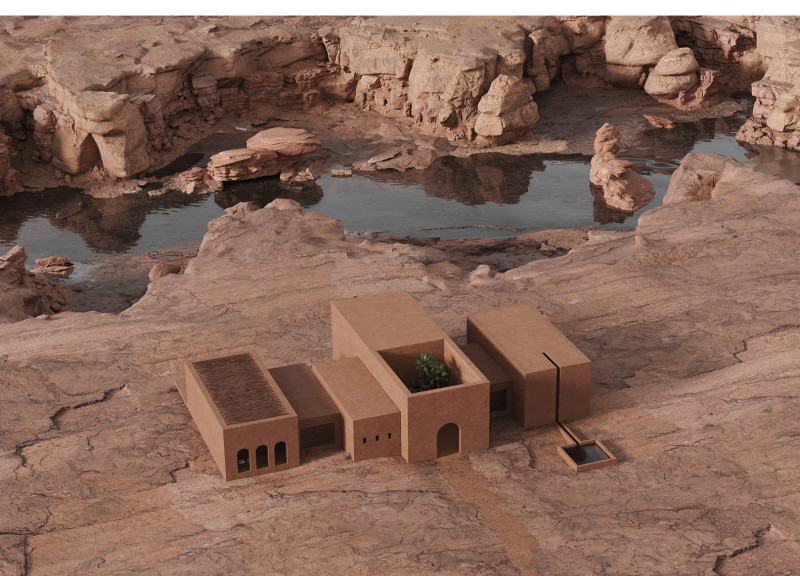5 key facts about this project
The architectural project "Elemental Place" is located in the Negev desert and represents a comprehensive approach to integrating modern design with the region's historical context and natural landscape. Designed as both a communal hub and a learning environment, this facility embodies a commitment to sustainability and architectural harmony within its arid surroundings. The project serves functions ranging from educational spaces to multipurpose areas, emphasizing social interaction and community engagement.
The overall architectural vision emphasizes a dialogue with the elemental aspects of nature, specifically focusing on earth, water, and wind. This is reflected in the selection of materials and the layout of spaces that prioritize natural ventilation and light. The building utilizes local materials such as adobe, reinforced concrete, wood, glass, and metal. This materiality not only ensures durability and insulation but also reinforces the building's connection to its desert environment.
Innovative spatial organization includes the integration of quiet zones alongside collaborative spaces, creating a spectrum of environments that accommodate various communal activities while maintaining a sense of tranquility. Unique architectural features, such as circular windows and arched doorways, enhance functionality while fostering aesthetic continuity throughout the facility.
Sustainable design practices are evident in the project’s emphasis on passive climate control strategies. Large windows maximize natural light, while thick adobe walls regulate indoor temperatures by absorbing heat during the day and releasing it at night. The various spaces within the structure are skillfully oriented to exploit prevailing winds, promoting comfort without reliance on mechanical cooling systems.
The project distinguishes itself through its commitment to local context, both in its architectural language and its use of materials that are sympathetic to the environment. Unlike other projects within the region, "Elemental Place" directly references the geological history of the Negev, drawing parallels between the natural landscape and human experience.
Exploring the project presentation offers an opportunity to delve into architectural plans, sections, and detailed designs that illustrate these concepts further. By reviewing these elements, one can gain deeper insights into the architectural ideas that shaped "Elemental Place" and understand how this project aligns with contemporary practices in sustainable architecture.























